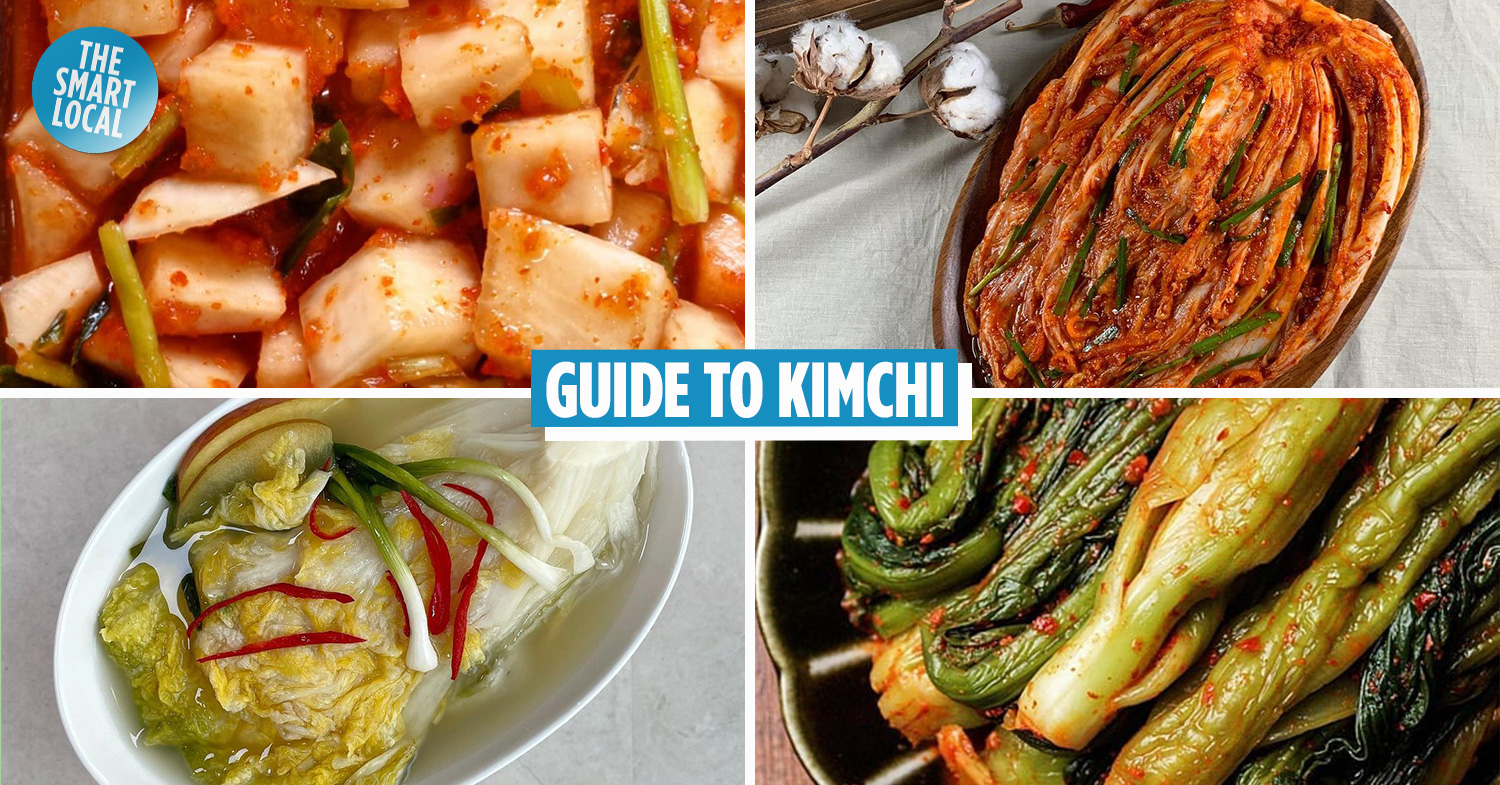Types of kimchi guide
Everyone knows that kimchi is a must-have side dish in Korean cuisine. From Korean BBQ restaurants to your regular supermarkets, you can find kimchi in many places besides Korea today. But how much do you really know about the different types and names of kimchi? Here are eight types of kimchi you must know before you can declare yourself a connoisseur of Korean food.
Table of Contents
1. Baechu kimchi
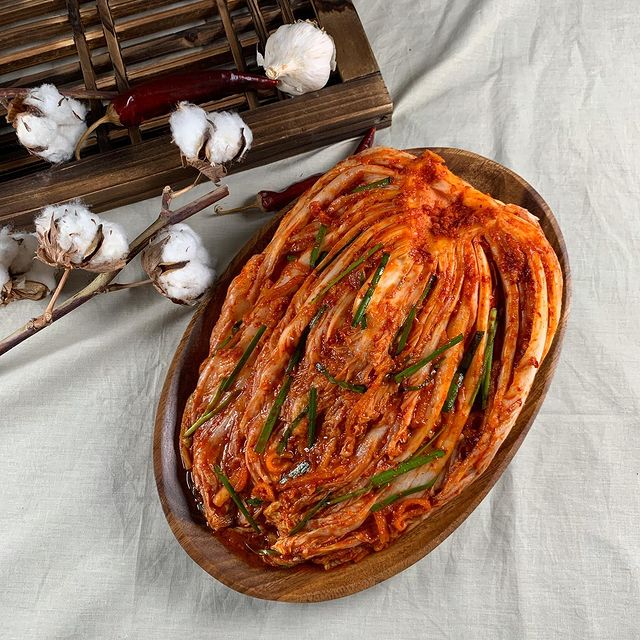
Image credit: @the_harukimchi
When people talk about kimchi, they’re usually referring to “baechu” (배추; cabbage) kimchi. It’s the most commonly known and eaten type of kimchi. Baechu kimchi is an indispensable side dish that’s served in most households and Korean restaurants.
Its origin dates back to 37 BCE. Subsequently, the spread of Buddhism during the Silla Dynasty (57 BCE – 935 CE) encouraged more Koreans to cultivate a vegetarian lifestyle. As a result, the practice of fermenting vegetables became prevalent.
The process of fermentation allowed one to store vegetables for a prolonged period of time and throughout harsh winters.
Baechu kimchi is made with cabbages that are rinsed several times, then salted evenly before adding other ingredients such as hot red pepper flakes, spring onions, and fish sauce.
Some people prefer to eat freshly made baechu immediately as they enjoy the crunch and raw taste, while others let it ferment for a longer time to get a sour flavour.
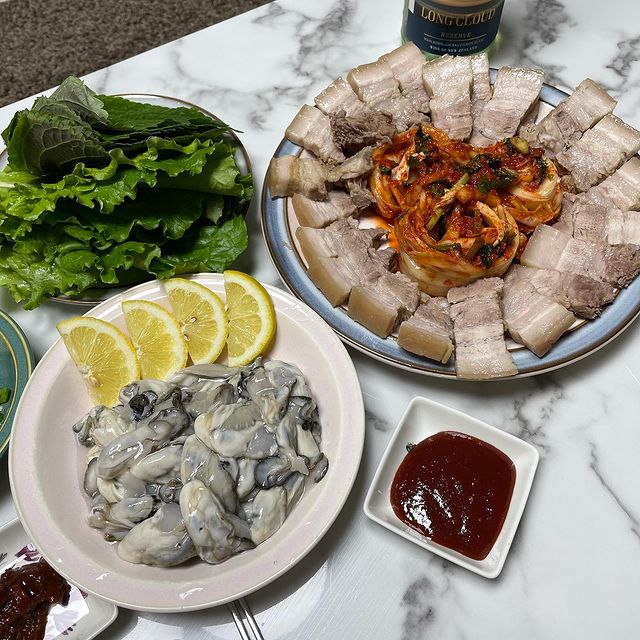
Image credit: @loveleeys
Although baechu kimchi is a great match with almost any Korean food, it’s best paired with bossam (보쌈; thinly sliced boiled pork). It’s also used to make kimchi stew and kimchi pancakes.
2. Kkakdugi
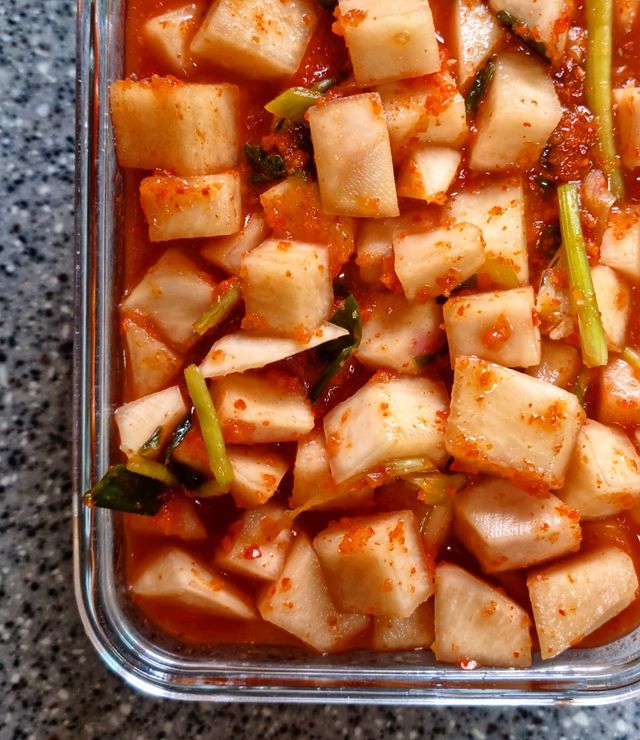
Image credit: @v_meloncollie
Kkakdugi (깍두기), also known as cubed radish kimchi, is a type of crunchy kimchi made with radish.
Kkakdugi has been around for more than 200 years as it was born during the era of King Jeong-jo (1752-1800). Today, kkakdugi is one of the many side dishes served in Korean restaurants. But in the Joseon Dynasty, it was a rare dish served only to the elites.
Similar to baechu kimchi, kkakdugi contains ingredients such as chili pepper, chopped garlic, and salted fermented shrimp.
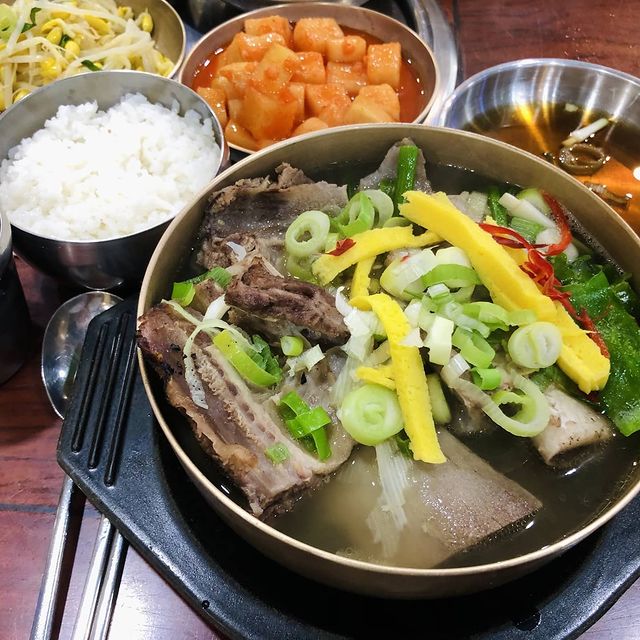
Image credit: @pyun_bonza
Many Koreans enjoy having kkakdugi with soup dishes, such as seolleongtang (설렁탕; ox bone and brisket soup) and galbitang (갈비탕; beef short rib soup).
3. Gat kimchi
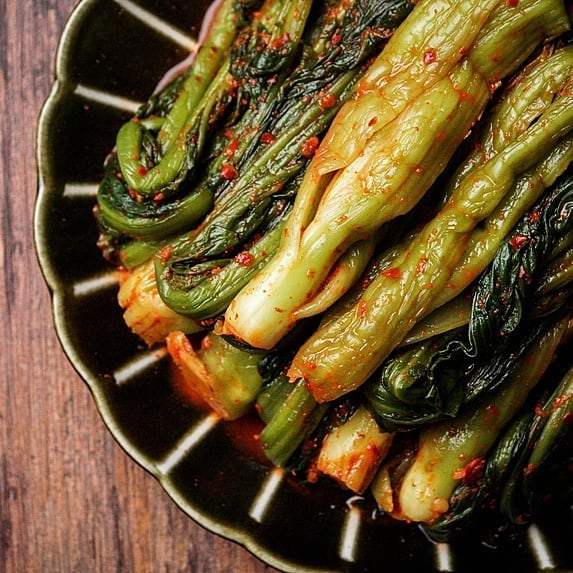
Image credit: @bimil.t
Compared to baechu and kkakdugi, gat kimchi (갓김치; mustard leaf kimchi) is a little less commonly eaten outside of Korea.
Although gat kimchi’s year of origin is unclear, we know that it originated in South Jeolla Province. More specifically, it was birthed on Dolsan Island, which is known for growing mustard greens. Because of this, many Koreans refer to Dolsan Island as “Dolsangat” (돌산갓).
Gat kimchi is made with ingredients such as mustard greens, glutinous rice paste, and fermented anchovy paste. Gat, or mustard leaf, is a popular vegetable in Korea as it’s filled with good nutrients, such as vitamins A, C and K.
The mustard leaves have a distinct and stimulating taste. Some say it’s fragrant, while others say it’s pungent. But one thing is for sure – once you get a taste of gat kimchi and fall in love with its unique taste, there’s no turning back.
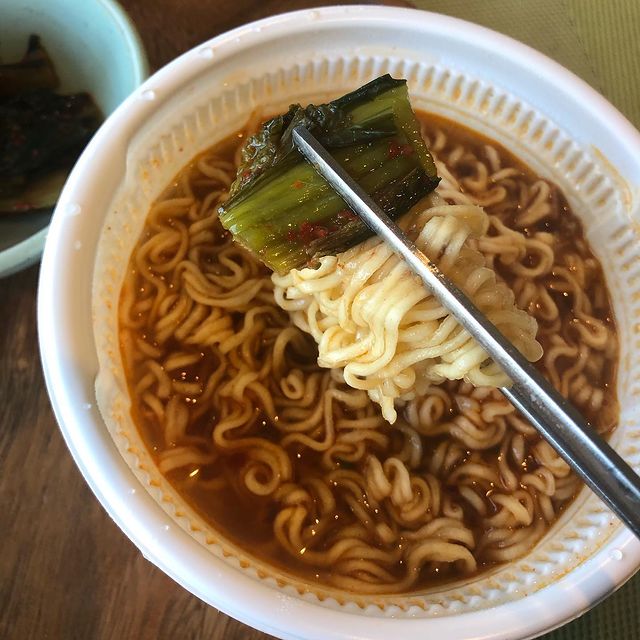
Image credit: @sister_jipbob
The next time you’re having instant ramen noodles, try pairing it with gat kimchi. It will be a game changer.
4. Chonggak kimchi
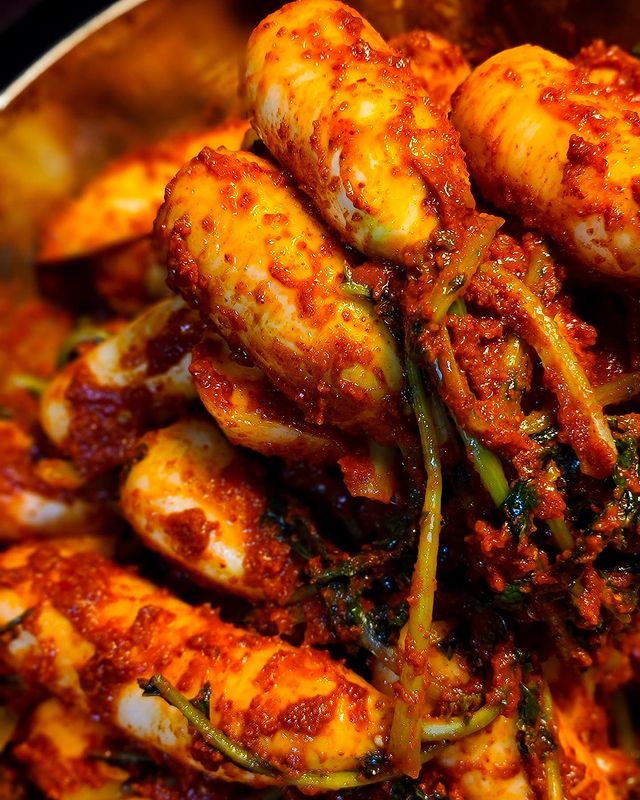
Image credit: @jj.jjihye
Chonggak kimchi (총각김치) is the crunchiest among all the different types of kimchi.
According to Joseon Culinary Studies, a 20th-century cookbook on traditional Korean food, chonggak kimchi was first developed by Princess Sukseon (1793-1836), the daughter of King Jeongjo.
Chonggak kimchi is also called ponytail radish kimchi as its main ingredient, radish with leafy stems attached, resembles a ponytail.
However, “chonggak kimchi” can also be directly translated to mean “bachelor kimchi” as “chong-gak” means bachelor in Korean. It got its name from the fact that the leafy stem of the radish used to make the kimchi is reminiscent of a hairstyle worn by young, single Korean men in the past.
Ingredients used to make chonggak kimchi include green onions, fermented anchovy liquid, and flour paste.
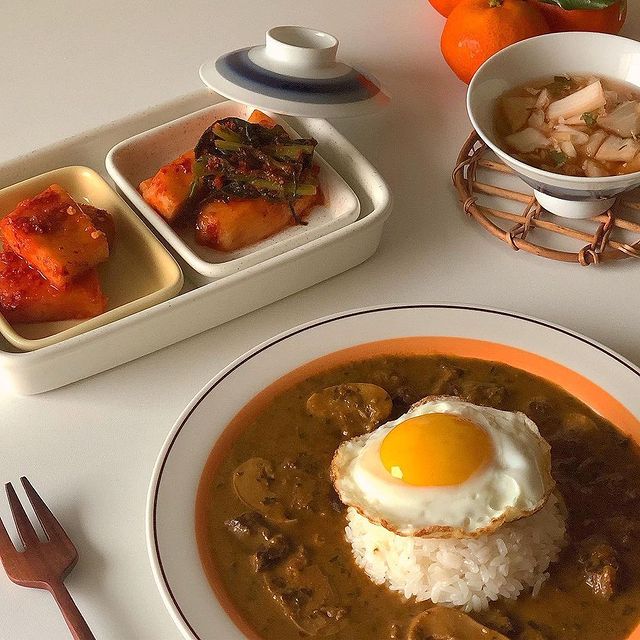
Image credit: @sunday_gourmet_
Chonggak kimchi is the perfect match with Korean curry rice and kalguksu (칼국수; knife-cut noodle soup) as it mellows the strong taste of curry, and adds a kick of spice to the mild taste of noodle soup. It’s also a great addition to your cheonggukjang (청국장; fermented soybean soup) because it gives an extra crunch to the otherwise mushy texture of fermented soybeans.
5. Dongchimi
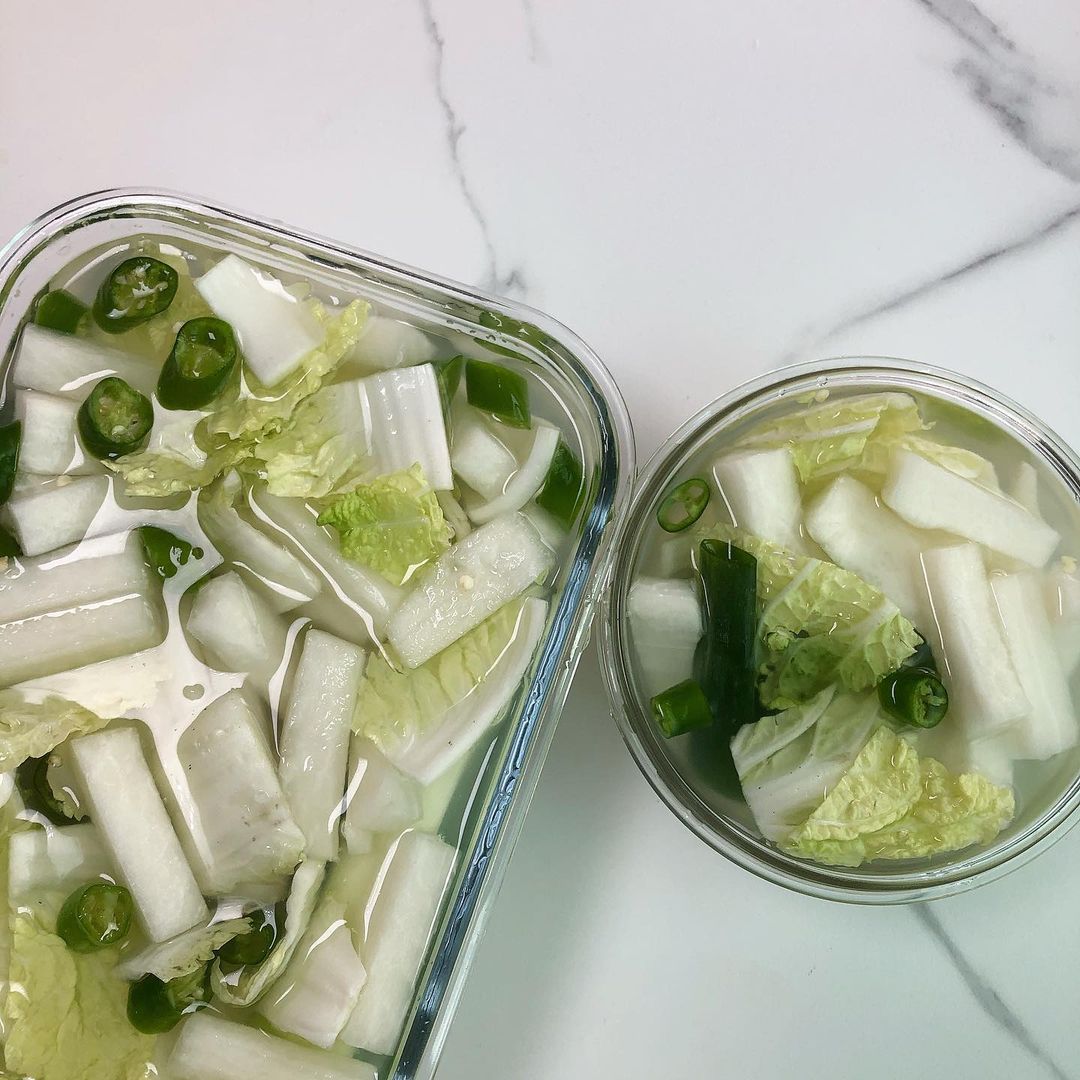
Image credit: @jiso_kitchen
During the Silla Dynasty (57 BCE) and Goryeo Dynasty (918-1392), radish kimchi was separated into non-watery and watery forms. This marked the birth of dongchimi (동치미), a watery radish kimchi.
Its main ingredients include salted radish chopped into small pieces, sweet Korean pear, and water. You can also add slices of cabbage for an extra crunch. These ingredients may not seem like much, but the magic of fermentation imparts a tangy yet sweet taste.
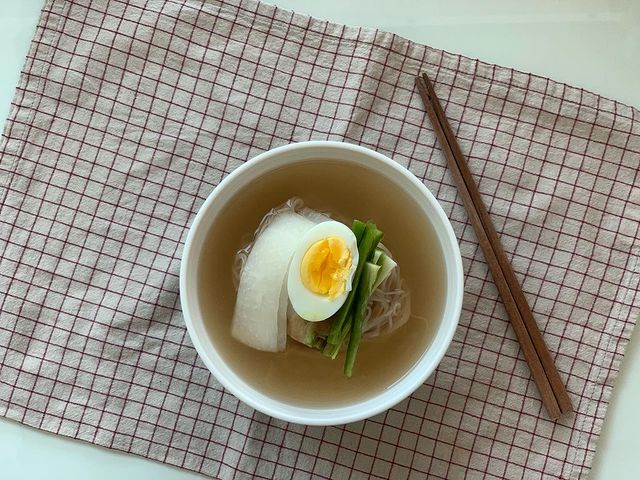
Image credit: @mihae.s
Another special feature of dongchimi is that its liquid can be used as a broth for cold noodles. Some households and restaurants serve mul naengmyeon (물냉면) – thin, chewy cold noodles made of buckwheat and potato starch – made with dongchimi broth. There’s even a dish called “dongchimi guksu” (동치미국수), which literally translates to “dongchimi noodles”.
Dongchimi is enjoyed by people of all ages as it’s not spicy. Also, it’s a refreshing side dish when you’re having greasy food, such as Korean BBQ.
6. Baek kimchi
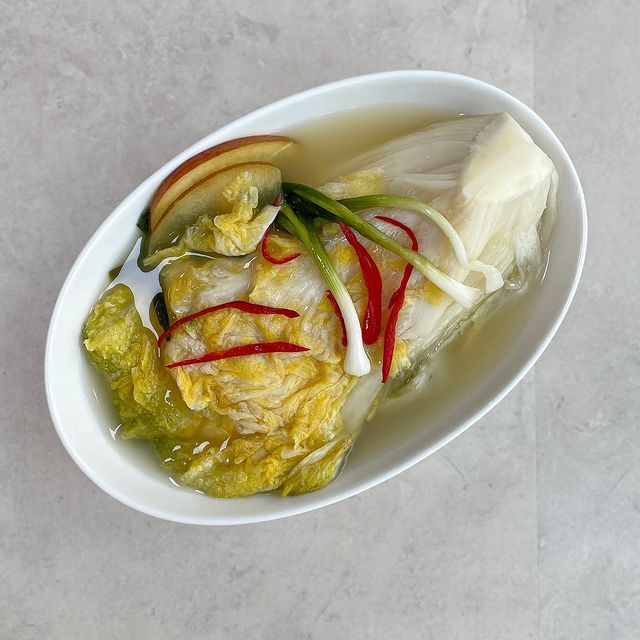
Image credit: @matcharim_jinju
Baek kimchi (백김치) literally means “white kimchi”, and it’s named so because it doesn’t contain hot red pepper flakes. Just think of it as the non-spicy version of baechu kimchi.
Although its year of origin is unknown, we can assume that baek kimchi was during the era of the Three Kingdoms (57 BCE to 668 CE), based on the records of fermented foods from that period.
Baek kimchi is stuffed with ingredients such as scallion, pear, and water celery in between layers of cabbage.
It’s a great side dish for children, the elderly, or even patients who have to steer clear of spicy and stimulating food. Studies have shown that baek kimchi reduces the risk of chronic health conditions, such as diabetes and cancer.
Since baek kimchi doesn’t tantalise your tastebuds, first-timers can give it a shot before trying other types of kimchi.
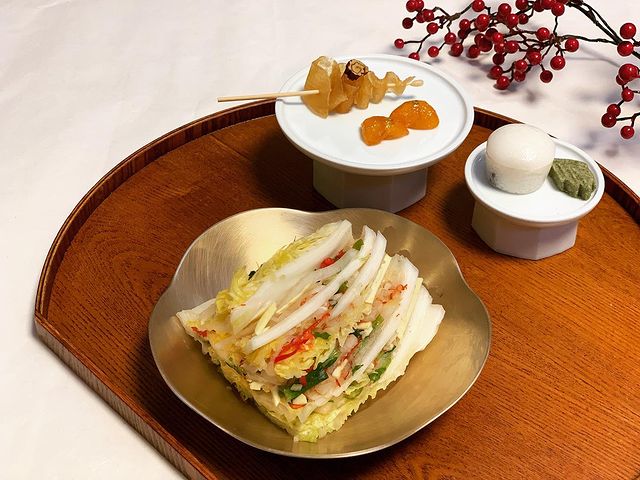
Image credit: @migeumchi
Baek kimchi is best paired with songpyeon (송편; traditional Korean rice cake) and jokbal (족발; pig trotters).
7. Oi-sobagi
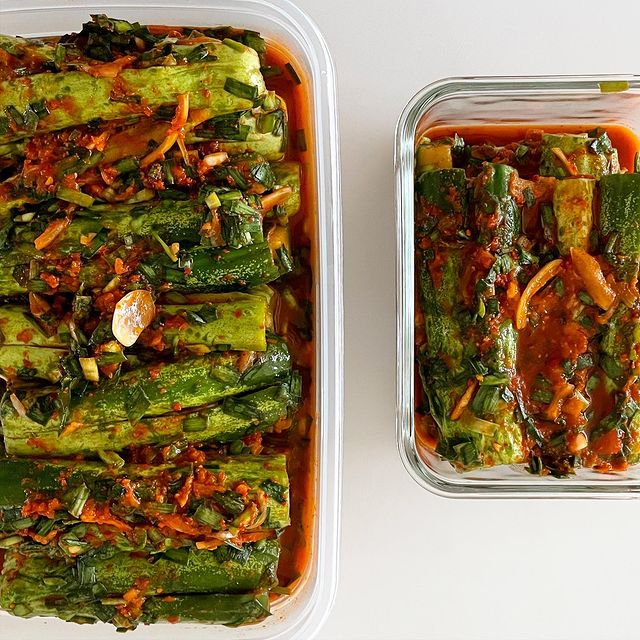
Image credit: @one_plate_vegan
You know summer is here when you see oi-sobagi (오이소박이; cucumber kimchi) served as a side dish in Korean households and restaurants. As it’s made with refreshing cucumbers, oi-sobagi is a perfect accompaniment to the hot season.
The first oi-sobagi was recorded in Jeungbo Sallim Gyeongje, a book on Korean agriculture published in 1766.
Small cucumbers are sliced lengthwise into four strips, while ensuring that one end of the cucumber remains intact. Then, it’s stuffed with ingredients such as onions and carrots.
Unlike most types of kimchi, oi–sobagi does not have to be stored and fermented for a long duration. Instead, it is eaten in just a few days, so that you can enjoy the fresh taste of cucumbers.
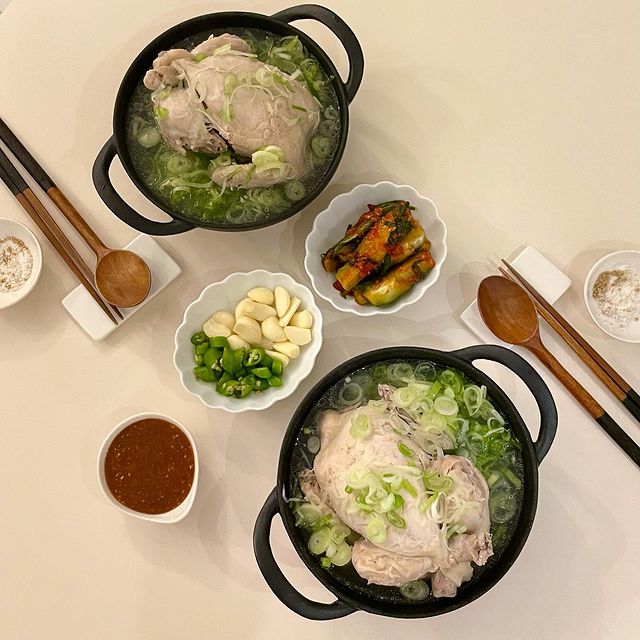
Image credit: @dal.dalhae
Oi–sobagi goes well with samgyetang (삼계탕; ginseng chicken soup) and noodle dishes, such as kong-guksu (콩국수; noodles in cold soybean soup).
8. Yeolmu kimchi
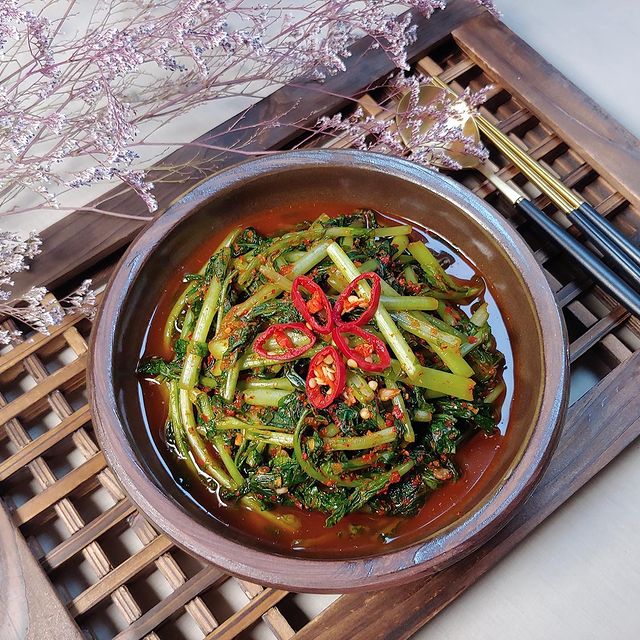
Image credit: @the_harukimchi
Another representative kimchi of summer is yeolmu kimchi (열무김치).
“Yeolmu” refers to young radish greens with roots attached. Young radish greens are different from mature radish greens as the former is tender and soft, while the latter is tough and chewy.
Yeolmu kimchi is made with simple ingredients such as coarse salt, fish sauce, and red chili peppers.
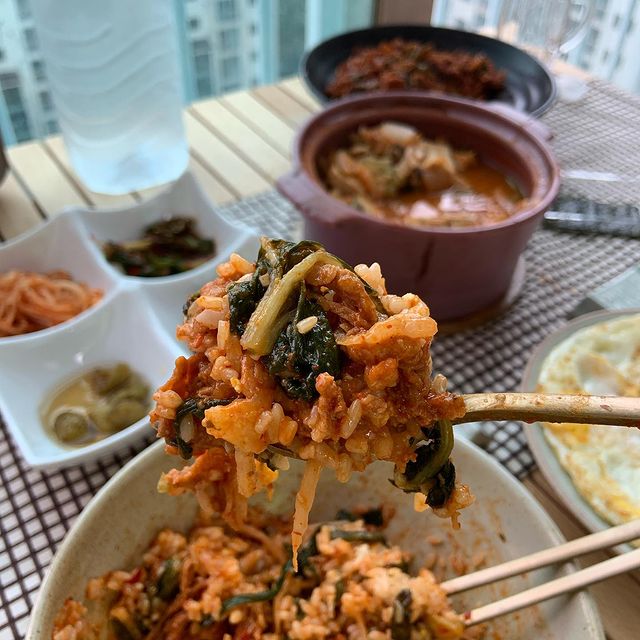
Image credit: @singnation34
Yeolmu kimchi is a great addition to your bibimbap (비빔밥; rice mixed with vegetables) and bibim-guksu (비빔국수; spicy cold noodles).
A guide to various types of kimchi
Kimchi has been around for a long time, and it will continue to be the pride and pillar of Korean cuisine. Although the list of kimchi types is endless, it’s never too late to embark on your kimchi journey. The next time you visit a Korean restaurant, check out the different types of kimchi they serve, and give them a shot to see which ones you like best.
Also check out:
- Traditional Korean food origins
- Korean traditional snacks
- Chuseok food eaten during Korean Thanksgiving
- Korean diet recipes with tofu
- Korean cooking channels
Cover image adapted from (clockwise from top-left): @v_meloncollie, @the_harukimchi, @matcharim_jinju, and @one_plate_vegan
